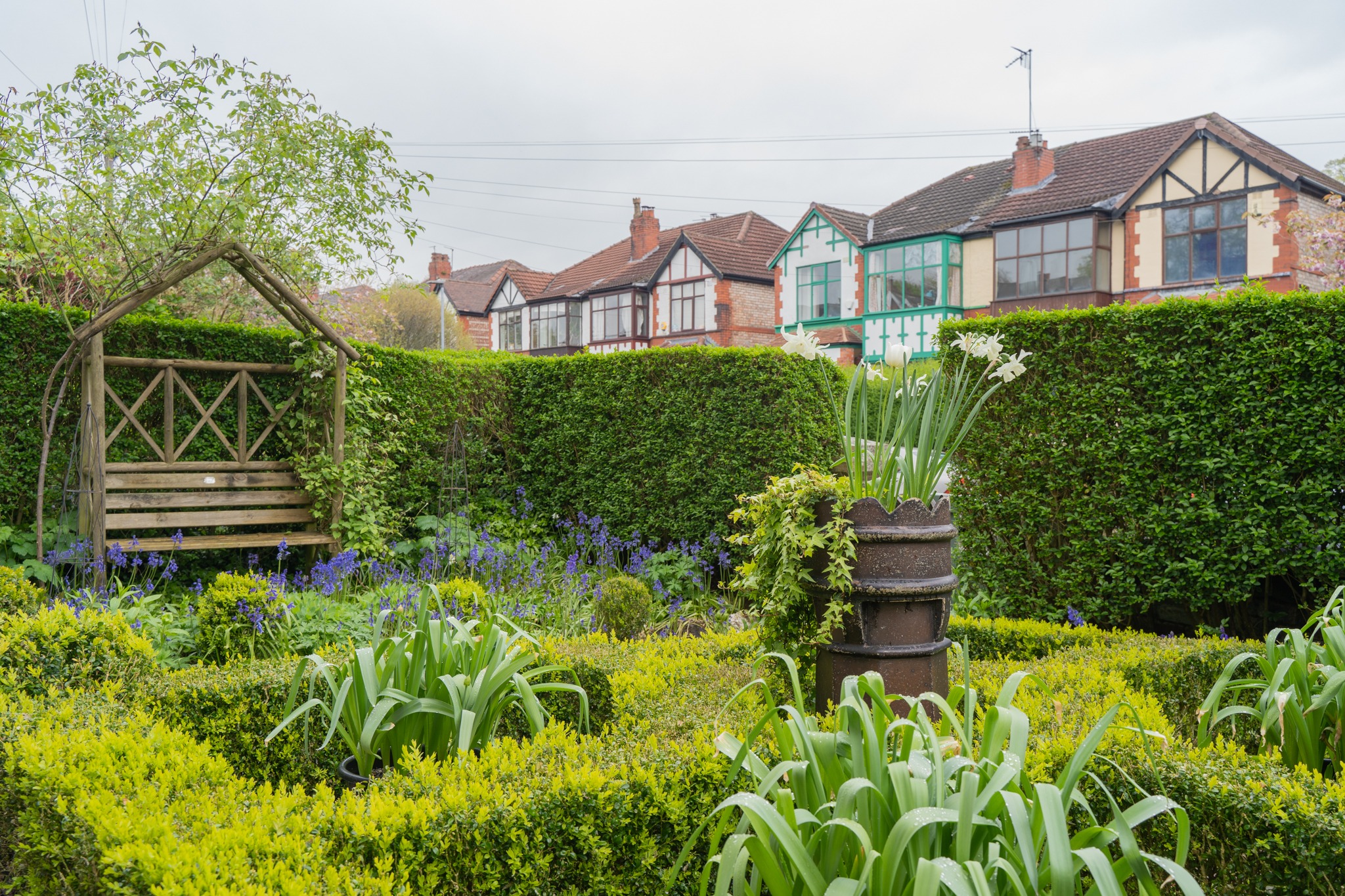What is companion planting?..
If you have decided to set aside a portion of your garden to grow your own this summer, companion planting can help you achieve better crops, keep pests at bay and maximise flavour. What’s not to love?
Companion planting is a gardening technique that involves planting different types of plants together for their mutual benefit. This method not only helps protect plants from pests and diseases, but also promotes pollination, saves space, enhances productivity, and attracts beneficial insects. Companion planting is an effective and eco-friendly way of gardening as it eliminates the need for chemical sprays to repel insects and other pests.
Here’s the British Garden Centres’ guide to companion planting to boost your harvest and tune into a more sustainable way to garden, using fewer chemicals and promoting better soil.
Beans with sweetcorn and squash
A good example of the companion planting concept is the “three sisters” method. This technique involves planting three main crops – beans, sweetcorn, and squash – together in the same plot of land. This is actually an ancient method used by Native American long ago. It is a form of sustainable gardening as it increases biodiversity, attracts pollinators and enhances soil fertility.
Beans are nitrogen-fixing plants: they can convert nitrogen from the air and feed it into the soil. This process helps to increase soil fertility and provides the sweetcorn and squash with the necessary nutrients to grow. The sweetcorn acts as a natural trellis for the beans to climb. As the beans grow up the corn stalks, they provide stability, while also providing shade to the soil, which helps to keep it moist and cool. The squash, or if you wish, pumpkins act as a natural mulch, which helps to retain moisture in the soil and suppresses weeds. The large leaves of the squash also provide shade to the soil, which helps prevent water from evaporating too quickly.
It’s a win win win!
Marigolds with vegetables
If you are looking for a natural and effective way to ward off harmful insects like aphids and whitefly, French marigolds could be the perfect solution, as their scent they can act as a natural repellent for pests. Plant French marigolds alongside peas, beans, potatoes and sweetcorn, which not only helps keep the bugs at bay, but looks really pretty, too.
Onions with carrots
Planting onions alongside carrots can be extremely beneficial for both vegetables. Onions have a strong scent that acts as a natural repellent for carrot root fly, the nasty bugs that damage carrot growth – if you’ve ever pulled a carrot from the soil that’s stunted and has rusty red rings around the top, it’s been attacked by carrot root fly. The infected carrots are inedible, and often have the fly larvae buried in the carrot flesh. They find the carrots by their smell, so by planting onions alongside carrots, you can seek to disguise the carrot smell and protect your carrot plants. Not only does this method offer a practical solution for pest control, but it also maximises the use of your vegetable patch by allowing you to grow two crops in the same space.
Clover with vegetables
Clover is an excellent companion plant as it fixes nitrogen in the soil, a vital mineral for healthy plant growth. Additionally, it acts as a living mulch and keeps the ground cool. Clover also serves as a sanctuary for predatory spiders that hunt the pests that often harm crops. Plant clover with vegetables such as cabbage, kale, shallots, broccoli and Brussels sprouts. Once you’ve cut your crop, leave the clover in the soil over winter as a green fertiliser, boosting the soil quality for next year.
Garlic with roses
Admittedly this seems a bit odd, placing two very different fragrances alongside each other but it’s a really effective way to protect your roses, and grow a crop of garlic. Planting garlic bulbs at the foot of roses makes them taste nasty to aphids, ants, snails and flea beetles. The beautiful globe flowers of the garlic also have the added benefit of attracting bees and butterflies. Once you’ve harvested your garlic, you can macerate some of it in water and use it to treat any powdery mildew you find popping up in the garden as the season progresses.
Tomatoes and basil
Not just perfect when sharing a plate, planting basil near tomato plants can be beneficial as the aromatic scents released by basil can enhance the flavour of the tomatoes. Basil also has natural pest-repelling properties, which can help protect the tomato plants from insects such as aphids and whitefly. This can be especially useful for gardeners who prefer to use natural methods for pest control.
Herbs and brassicas
Did you know that certain herbs can not only enhance the flavour of cabbage, broccoli, and kale but also keep away unwanted pests like cabbage moths? Thyme, sage, and rosemary are some of the most effective herbs when it comes to repelling cabbage moths, thanks to their strong scent.
Sweet pea with courgettes
The cottage garden favourite will encourage insects that would otherwise attack your courgette plants. Sweet peas are quick to establish, will flower early and last until the end of summer, when they make beautiful cut flowers to take indoors.
Lavender and chilli
Planting lavender and chilli together offers multiple benefits for your garden. Lavender’s aromatic scent acts as a natural pest repellent, deterring insects like aphids and moths that can harm chilli plants, while also attracting beneficial pollinators like bees and butterflies, enhancing pollination and resulting in a better chilli harvest. Lavender’s purple flowers complement the vibrant green foliage of chilli plants, so your chilli planting will look good, too!
Companion planting is a big step towards making your gardening more environmentally friendly, as you boost crops, reduce your reliance on bug sprays and fertilisers, and gain more from the same space. Everyone’s a winner.
Eddie – Friday 26th April 2024. (Image used from Rowan Avenue, Whalley Range).



